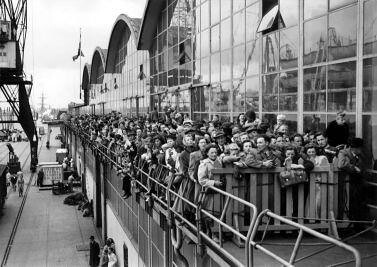Dutch National Archive on flickr

Nationaal Archief, the Dutch national archive, and Spaarnestad Photo, an archive of press and documentary photos, announced today that they published part of their photo collections on The Commons on Flickr. Albums include the Labour Inspectorate collection, the 1928 olympics in Amsterdam, and Dutch emigrants.
The Nationaal Archief is the first Dutch participant in Flickr the Commons. The Nationaal Archief and Spaarnestad Photo hope to collect the stories behind the photographs this way and asks visitors to contribute their knowledge:
"You can help us enrich our knowledge of the photo collections by adding tags and comments. If you recognize people or locations in the photos, or have an interesting story to tell about one of the photos, then post a comment [..] At the moment, 200 photographs from the Nationaal Archief's collection (most of them from the Labour Inspectorate collection) and 200 from the Spaarnestad Photo collection are available for viewing on Flickr the Commons. We will be adding new material regularly, and hope that you will continue to return to the site to see what's new."
Photo: Emigrants waiting to board the S.S. Volendam, bound for Canada. Rotterdam, 15 May 1951. Collection Spaarnestad Photo.
Labels: Amsterdam, Canada, Emigration, Rotterdam





2 Comments:
Thanks for pointing us to this wonderful collection. I've only looked at a few of the photos but I'll be spending lots of time going through them all. They are fabulous!
You're welcome, Denise.
What I like especially about this collection is "no known copyright restrictons", which means I can use the photos on my blog. Usually the Nationaal Archief charges a (hefty) usage fee for any non-personal usage, but in this case the archive "authorizes others to use the work without restrictions".
There are many more photos on their image bank, but you have to search using a Dutch interface.
Post a Comment
<< Home